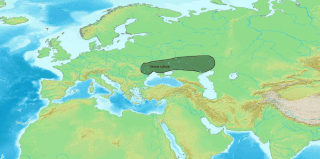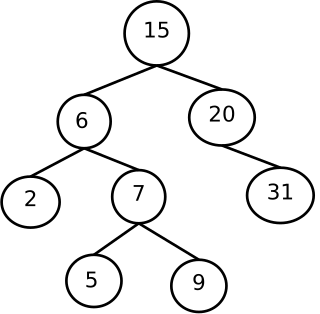 W
WThe Anatolian hypothesis, also known as the Anatolian theory or the sedentary farmer theory, first developed by British archaeologist Colin Renfrew in 1987, proposes that the dispersal of Proto-Indo-Europeans originated in Neolithic Anatolia. It is the main competitor to the Kurgan hypothesis, or steppe theory, the more favoured view academically.
 W
WThe Armenian hypothesis of the Proto-Indo-European homeland, proposed by Georgian Tamaz V. Gamkrelidze and Russian linguist Vyacheslav Ivanov in the early 1980s, suggests that Proto-Indo-European was spoken during the 5th–4th millennia BC in the "Armenian Highlands, Northern Mesopotamia".
 W
WCenter versus periphery is a linguistic theory put forward by Japanese folklorist Yanagita Kunio explaining the usage of certain words in a language used in some regions while not in others. The theory may also explain the existence of other cultural features, or lack thereof, in differing regions; though it was specifically created to address linguistic differences.
 W
WIn linguistics, cognates, also called lexical cognates, are words that have a common etymological origin. Cognates are often inherited from a shared parent language, but they may also involve borrowings from some other language. For example, the English words dish, disk and desk and the German word Tisch ("table") are cognates because they all come from Latin discus, which relates to their flat surfaces. Cognates may have evolved similar, different or even opposite meanings, and although there are usually some similar sounds or letters in the words, they may appear to be dissimilar. Some words sound similar, but do not come from the same root; these are called false cognates, while some are truly cognate but differ in meaning; these are called false friends.
 W
WIn linguistics, the comparative method is a technique for studying the development of languages by performing a feature-by-feature comparison of two or more languages with common descent from a shared ancestor and then extrapolating backwards to infer the properties of that ancestor. The comparative method may be contrasted with the method of internal reconstruction in which the internal development of a single language is inferred by the analysis of features within that language. Ordinarily, both methods are used together to reconstruct prehistoric phases of languages; to fill in gaps in the historical record of a language; to discover the development of phonological, morphological and other linguistic systems and to confirm or to refute hypothesised relationships between languages.
 W
WEurolinguistics is a neologistic term for the study of the languages of Europe. The term Eurolinguistics was first used by Norbert Reiter in 1991. Apart from a series of works dealing with only a part of the European languages, the work of Harald Haarmann pursues a "pan- or trans-European perspective". This goal is also pursued by Mario Wandruszka.
 W
WAn inkhorn term is a loanword or a word coined from existing roots, which is deemed to be unnecessary or overly pretentious.
 W
WAn isogloss, also called a heterogloss, is the geographic boundary of a certain linguistic feature, such as the pronunciation of a vowel, the meaning of a word, or the use of some morphological or syntactic feature. Major dialects are typically demarcated by bundles of isoglosses, such as the Benrath line that distinguishes High German from the other West Germanic languages and the La Spezia–Rimini Line that divides the Northern Italian languages from Central Italian dialects. However, an individual isogloss may or may not have any coincidence with a language border. For example, the front-rounding of /y/ cuts across France and Germany, while the /y/ is absent from Italian and Spanish words that are cognates with the /y/-containing French words.
 W
WFrede Jensen, Ph.D., was a 20th-century, Danish-born Romance philologist, author, and professor of French. Author of 17 books and over 60 articles, he was widely respected by the romance philology community and recognized as an expert in the field. He is highly esteemed for his detailed and thorough publications on the grammar of Old Occitan and has been referred to endearingly as "the 'Grevisse' of old Occitan". Jensen is also considered an expert on Sicilian poetry. His English translation and analysis of previously untranslated Sicilian poems have been honorably referred to as one of the codices optimi on the subject, dating from Dante forward. An extraordinary linguist, Jensen was fluent in eight languages with a remarkable command of medieval/ancient Romance languages. His publications include works on vulgar and classical Latin, old Italian, old Spanish, medieval Occitan, old French, and old Portuguese.
 W
WJespersen's Cycle (JC) is a series of processes in historical linguistics, which describe the historical development of the expression of negation in a variety of languages, from a simple pre-verbal marker of negation, through a discontinuous marker and in some cases through subsequent loss of the original pre-verbal marker. The pattern was formulated in Otto Jespersen's 1917 book Negation in English and Other Languages, and named after him in Swedish linguist Östen Dahl's 1979 article Typology of Sentence Negation.
 W
WThe Kurgan hypothesis or Steppe theory is the most widely accepted proposal to identify the Proto-Indo-European homeland from which the Indo-European languages spread out throughout Europe and parts of Asia. It postulates that the people of a Kurgan culture in the Pontic steppe north of the Black Sea were the most likely speakers of the Proto-Indo-European language (PIE). The term is derived from the Russian kurgan (курга́н), meaning tumulus or burial mound.
 W
WIn linguistics, language death occurs when a language loses its last native speaker. By extension, language extinction is when the language is no longer known, including by second-language speakers. Other similar terms include linguicide, the death of a language from natural or political causes, and rarely glottophagy, the absorption or replacement of a minor language by a major language.
 W
WA language family is a group of languages related through descent from a common ancestral language or parental language, called the proto-language of that family. The term "family" reflects the tree model of language origination in historical linguistics, which makes use of a metaphor comparing languages to people in a biological family tree, or in a subsequent modification, to species in a phylogenetic tree of evolutionary taxonomy. Linguists therefore describe the daughter languages within a language family as being genetically related.
 W
WThe Paleolithic Continuity Theory, since 2010 relabelled as a "paradigm", as in Paleolithic Continuity Paradigm or PCP), is a hypothesis suggesting that the Proto-Indo-European language (PIE) can be traced back to the Upper Paleolithic, several millennia earlier than the Chalcolithic or at the most Neolithic estimates in other scenarios of Proto-Indo-European origins.
 W
WThe Pre-Indo-European languages are any of several ancient languages, not necessarily related to one another, that existed in Prehistoric Europe and South Asia before the arrival of speakers of Indo-European languages. The oldest Indo-European language texts date from the 19th century BC in Kültepe, now in Turkey, and while estimates vary widely, the spoken Indo-European languages are believed to have developed at the latest by the 3rd millennium BC. Thus, the Pre-Indo-European languages must have developed earlier than or, in some cases, alongside the Indo-European languages that ultimately displaced them.
 W
WIn the tree model of historical linguistics, a proto-language is a postulated language from which a number of attested known languages are believed to have descended by evolution, forming a language family. Proto-languages are usually unattested, hypothetical or reconstructed. In the family tree metaphor, a proto-language can be called a mother language. Occasionally, the German term Ursprache is used instead.
 W
WLinguistic reappropriation, reclamation, or resignification is the cultural process by which a group reclaims words or artifacts that were previously used in a way disparaging of that group. It is a specific form of a semantic change. Linguistic reclamation can have wider implications in the fields of discourse and has been described in terms of personal or sociopolitical empowerment.
 W
WThe Rosetta Project is a global collaboration of language specialists and native speakers working to develop a contemporary version of the historic Rosetta Stone to last from 2000 to 12,000 AD; it is run by the Long Now Foundation. Its goal is a meaningful survey and near permanent archive of 1,500 languages. Some of these languages have fewer than one thousand speakers left. Others are considered to be dying out because language policy based on an official language is increasing the prevalence of major languages that are used as the medium of instruction in public schools and national media. The intention is to create a unique platform for comparative linguistic research and education, as well as a functional linguistic tool that might help in the recovery or revitalisation of lost languages in the future.
 W
WHerbert Schendl is Professor and Chair Emeritus for English Historical Linguistics at the Department of English and American Studies at the University of Vienna. He has been the fourth "Luick"-Chair and a major proponent of the Vienna School of English Historical Linguisitics.
 W
WSlavs in Greece is a specialized linguistic study of the Russian-German linguist Max Vasmer.
 W
WIn historical linguistics, the tree model is a model of the evolution of languages analogous to the concept of a family tree, particularly a phylogenetic tree in the biological evolution of species. As with species, each language is assumed to have evolved from a single parent or "mother" language, with languages that share a common ancestor belonging to the same language family.
 W
WThe Vasconic substrate hypothesis is a proposal that several Western European languages contain remnants of an old language family of Vasconic languages, of which Basque is the only surviving member. The proposal was made by the German linguist Theo Vennemann, but has been rejected by other linguists.
 W
WIn historical linguistics, the wave model or wave theory is a model of language change in which a new language feature (innovation) or a new combination of language features spreads from its region of origin, affecting a gradually expanding cluster of dialects. The theory was intended as a substitute for the tree model, which did not seem to be able to explain the existence of some features, especially in the Germanic languages, by descent from a proto-language. At its most ambitious, it is a wholesale replacement for the tree model of languages. During the 20th century, the wave model had little acceptance as a model for language change overall, except for certain cases, such as the study of dialect continua and areal phenomena; it has recently gained more popularity among historical linguists, due to the shortcomings of the Tree model.